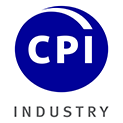ASHRAE publishes Standard 241, Control of Infectious Aerosols
Society calls it a significant advancement in reducing the risk of disease transmission in buildings
ATLANTA, Georgia, United States, 7 July 2023: ASHRAE said it has published its pioneering consensus-based, code-enforceable standard, developed to reduce the risk of infectious aerosol transmission in buildings.
The ASHRAE Standard 241, Control of Infectious Aerosols, establishes minimum requirements to reduce the risk of airborne disease transmission, such as SARS-COV-2 virus, which causes COVID-19, the flu virus and other pathogens in buildings, like single- and multi-family homes, offices, schools and healthcare facilities, ASHRAE said. The standard applies to new and existing buildings and major renovations and provides requirements for many aspects of air system design, installation, operation and maintenance, ASHRAE said.
According to ASHRAE, important topics addressed in the standard are:
Infection Risk Management Mode (IRMM) – Establishes requirements for an infection risk management mode (IRMM), which applies during identified periods of elevated disease transmission risk. Authorities having jurisdiction can determine when the enhanced protections of Standard 241 are required. Resilience (the ability to respond to extreme circumstances outside normal conditions) in Indoor Air Quality control design and operations is introduced.
Requirements for Equivalent Clean Airflow Rate – Sets requirements for equivalent clean airflow rate target per occupant of pathogen free air flow, reducing the risk of infection.
Requirements for Use of Filtration and Air Cleaning Technology – Provides extensive requirements for use of filtration and air cleaning (such as HEPA filters, air ionizers or UV lights) to achieve equivalent clean airflow requirements and be cost-effective, effectively and safely.
Planning and Commissioning – Provides assessment and planning requirements for being ready for the times when there is an event with increased disease-causing pathogen transmissions. The standard has a building-readiness plan that documents procedures for assessing existing or new HVAC systems to determine if they are working properly and attributing to the equivalent clean air delivered to spaces.

